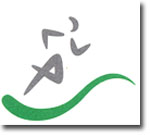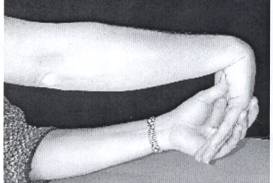

Lateral epicondylitis occurs with pain and inflammation on the outer side of the elbow where the muscles that extend the wrist attach to the bone. This can occur not only in tennis players but in anyone who performs repeated motions of the wrist.

How does it occur? Epicondylitis is caused by repetitive stress and strain to the muscles and tendons that attach the forearm muscles to the elbow. This can include any sudden change in activity level or intensity, or any incorrect grip or grip size in racquet sports.
Lateral Epicondylitis can be prevented by taking regular stretch breaks with any repetitive activity. Painful activities should be avoided or modified.
Commonly this occurs with pain and tenderness on the outside or lateral side of the elbow, pain or weakness with gripping or twisting of the wrist, and pain with lifting objects.
Initially treatment consists of anti-inflammatory medication and a stretching and strengthening program. Stretching is a key component in treating epicondylitis. Each stretch should be held for at least 10 seconds, then relax the arm and repeat up to several times a day and in between activities.
Strengthening exercises may also help but are not as useful as stretching. While doing any strengthening, exercises should always be pain free and done with a light weight and at least 3 sets of 15-20 repetitions. In some patients an elbow strap may help relieve some pain by taking pressure off of the area where the bone and tendon connect.
If symptoms continue after a trial of stretching and strengthening, patients may benefit from a cortisone injection. Cortisone acts by decreasing swelling and inflammation, and increasing blood flow to the area which aids in healing.
Most patients feel relief after one injection, but up to three cortisone injections over a period of time may be given.

If stretching and strengthening, anti- inflammatory medications, and cortisone injections do not relieve symptoms then surgery can be beneficial. Through a small incision over the bony prominence on the outside of the elbow the base of the diseased tendon is removed and then normal healthy tendon tissue is repaired back to the bone. After this surgery decreased activity with the affected arm is recommended for the first 4-6 weeks. Full rehabilitation is expected.
By respecting painful activities, frequent stretching and strengthening, and possibly an injection or two most patients are able to return to a pain free state. A small percentage of patients do not improve with nonsurgical treatment and require surgery. We expect these patients to recover fully with rehabilitation after surgery.





